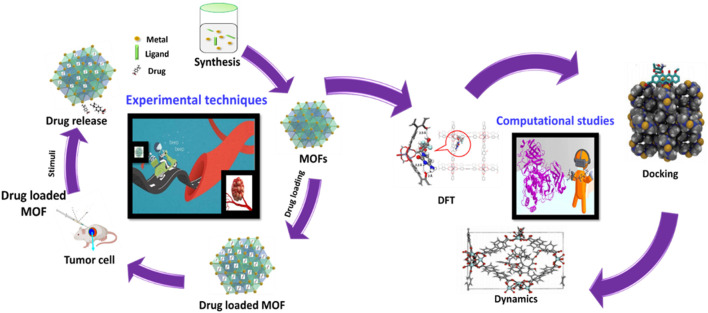- Record: found
- Abstract: found
- Article: found
MOFs for next-generation cancer therapeutics through a biophysical approach—a review

Read this article at
Abstract
Metal-organic frameworks (MOFs) have emerged as promising nanocarriers for cancer treatment due to their unique properties. Featuring high porosity, extensive surface area, chemical stability, and good biocompatibility, MOFs are ideal for efficient drug delivery, targeted therapy, and controlled release. They can be designed to target specific cellular organelles to disrupt metabolic processes in cancer cells. Additionally, functionalization with enzymes mimics their catalytic activity, enhancing photodynamic therapy and overcoming apoptosis resistance in cancer cells. The controllable and regular structure of MOFs, along with their tumor microenvironment responsiveness, make them promising nanocarriers for anticancer drugs. These carriers can effectively deliver a wide range of drugs with improved bioavailability, controlled release rate, and targeted delivery efficiency compared to alternatives. In this article, we review both experimental and computational studies focusing on the interaction between MOFs and drug, explicating the release mechanisms and stability in physiological conditions. Notably, we explore the relationship between MOF structure and its ability to damage cancer cells, elucidating why MOFs are excellent candidates for bio-applicability. By understanding the problem and exploring potential solutions, this review provides insights into the future directions for harnessing the full potential of MOFs, ultimately leading to improved therapeutic outcomes in cancer treatment.
Graphical Abstract

Related collections
Most cited references271
- Record: found
- Abstract: found
- Article: not found
Cancer statistics, 2019
- Record: found
- Abstract: not found
- Article: not found
Metal-organic framework materials as chemical sensors.
- Record: found
- Abstract: not found
- Article: not found